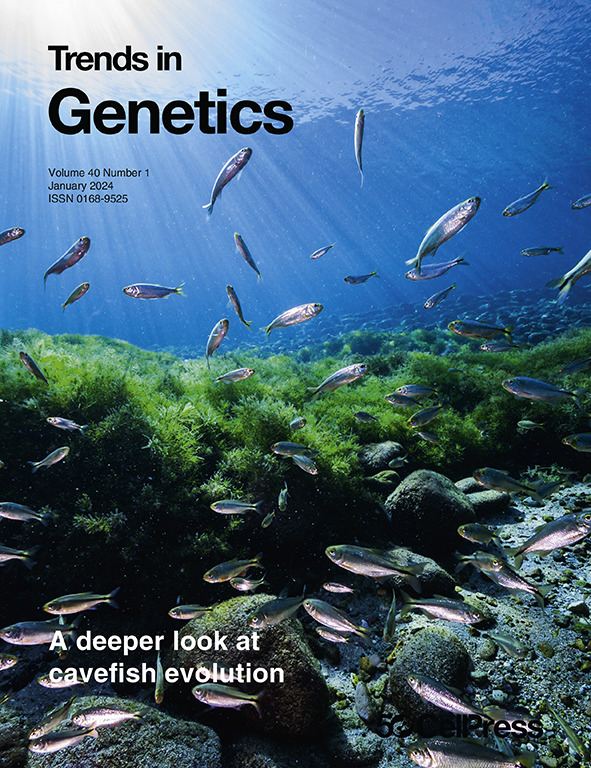用于物种研究的三维基因组学视图。
IF 13.6
2区 生物学
Q1 GENETICS & HEREDITY
引用次数: 0
摘要
基因组信息折叠成三维(3D)结构,这是一个很少被探索的物种进化驱动因素。现在,技术的进步使得研究生命之树的三维基因组结构(3DGSs)成为可能。在开始研究三维物种基因组学时,我们讨论了三维基因组结构在物种演化中的可能作用。本文章由计算机程序翻译,如有差异,请以英文原文为准。
A three-dimensional genomics view for speciation research.
Genomic information is folded in a three-dimensional (3D) structure, a rarely explored evolutionary driver of speciation. Technological advances now enable the study of 3D genome structures (3DGSs) across the Tree of Life. At the onset of 3D speciation genomics, we discuss the putative roles of 3DGSs in speciation.
求助全文
通过发布文献求助,成功后即可免费获取论文全文。
去求助
来源期刊

Trends in Genetics
生物-遗传学
CiteScore
20.90
自引率
0.90%
发文量
160
审稿时长
6-12 weeks
期刊介绍:
Launched in 1985, Trends in Genetics swiftly established itself as a "must-read" for geneticists, offering concise, accessible articles covering a spectrum of topics from developmental biology to evolution. This reputation endures, making TiG a cherished resource in the genetic research community. While evolving with the field, the journal now embraces new areas like genomics, epigenetics, and computational genetics, alongside its continued coverage of traditional subjects such as transcriptional regulation, population genetics, and chromosome biology.
Despite expanding its scope, the core objective of TiG remains steadfast: to furnish researchers and students with high-quality, innovative reviews, commentaries, and discussions, fostering an appreciation for advances in genetic research. Each issue of TiG presents lively and up-to-date Reviews and Opinions, alongside shorter articles like Science & Society and Spotlight pieces. Invited from leading researchers, Reviews objectively chronicle recent developments, Opinions provide a forum for debate and hypothesis, and shorter articles explore the intersection of genetics with science and policy, as well as emerging ideas in the field. All articles undergo rigorous peer-review.
 求助内容:
求助内容: 应助结果提醒方式:
应助结果提醒方式:


